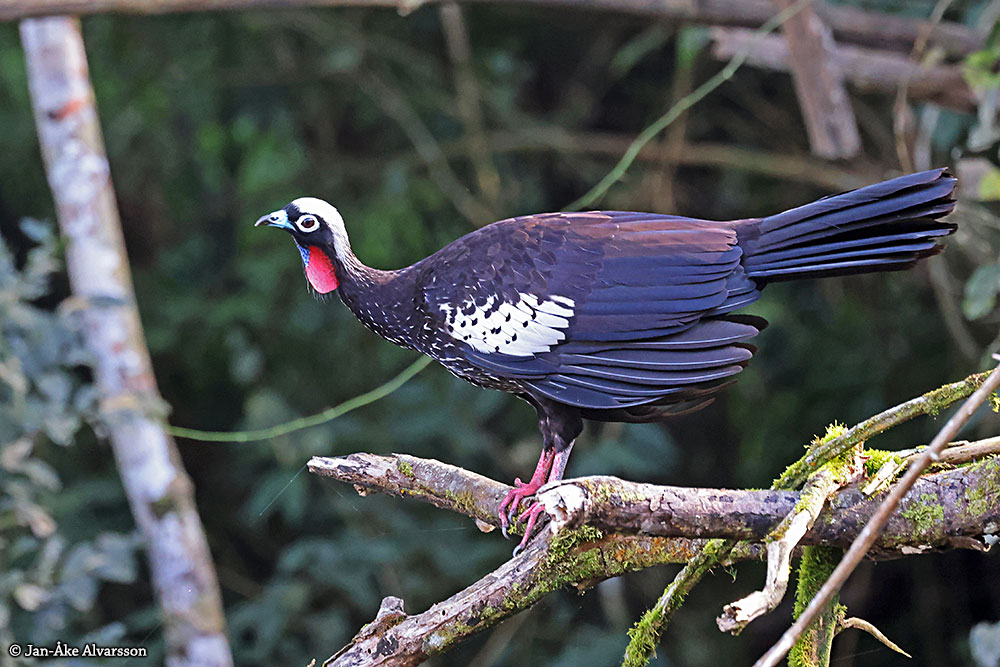
Pipile jacutinga
Black-fronted piping guan
/
Svartpannad guan
04c 2023-07-23 Uruguaí PP, Argentina
This is one of the most endangered species in the area, the Black-fronted piping guan. Yet I managed to photograph it twice. The first time in a tree in the parking lot at the mighty Iguazú Falls! The second time here in the Uruguaí Park in Argentina. Then it sat and waited for a quiet opportunity to jump down to the stream to drink. The Latin name comes from the South American Tupí language; in it the species is called jacú tinga, 'white chicken bird'. However, the species belongs to the tree fowl family (Cracidae) which is only found in Central and South America. They live mainly in trees and feed on fruit, complemented with insects and worms. The nest is built in a tree, and the female lays two to four eggs which she then incubates. The Black-fronted piping guan was once a very common bird, but its numbers have now declined sharply due to deforestation and hunting. Today it is very rare, except in a few protected reserves like here in the Uruguaí Park. It is now classified as "critically endangered".
Det här är en av de mest hotade arterna i området, svartpannad guan. Ändå lyckades jag fotografera den två gånger. Första gången i ett träd på parkeringen vid de mäktiga Iguazú-fallen! Andra gången här i Uruguaí-parken. Då satt den och väntade på ett lugnt tillfälle för att hoppa ner till bäcken för att dricka. Det latinska namnet kommer från det sydamerikanska tupíspråket; i det kallas arten jacú tinga, 'vit hönsfågel'. Arten tillhör emellertid familjen trädhöns (Cracidae) som bara finns i Central- och Sydamerika. De lever huvudsakligen i träd och livnär sig huvudsakligen på frukt, kompletterat med insekter och maskar. Boet byggs i ett träd, och honan lägger två till fyra ägg som hon sedan ruvar. Svartpannad guan var en gång en mycket vanlig fågel, men antalet har nu minskat kraftigt på grund av nedhuggen skog och jakt. Idag är den mycket sällsynt, förutom i några få skyddade reservat som här i Uruguaí-parken. Den klassificeras nu som "starkt hotad".